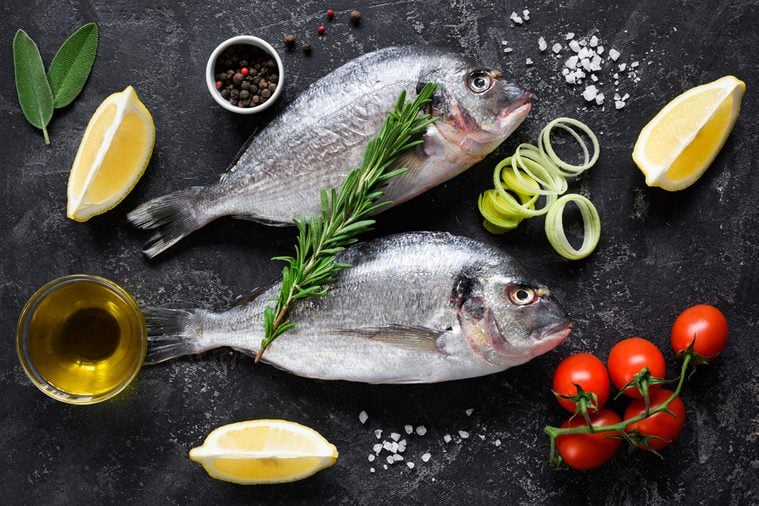
Fish 101
Fish are loaded with nutrients that support your health. The latest Dietary Guidelines for Americans recommend eating at least two to three servings, or eight to 12 ounces of seafood, each week (spread over two servings).
“Most of us still don’t eat enough fish,” says registered dietitian nutritionist Bonnie Taub-Dix, creator of betterthandieting.com and author of Read It Before You Eat It: Taking You from Label to Table. “Americans eat about 3.5 ounces of fish per week on average.
That’s about the size of a deck of cards and a far cry from what’s recommended. In fact, only 20 percent of Americans meet this goal.” If you want to incorporate more seafood into your diet, be sure that you’re choosing the right varieties.
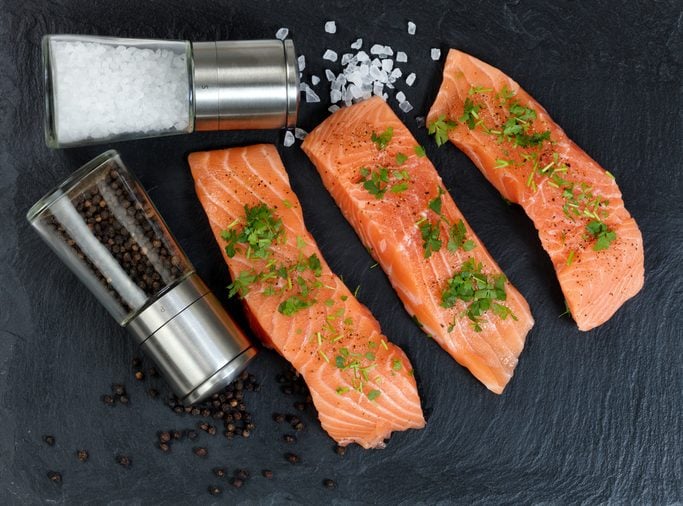
Best: Wild Pacific salmon
You’ll get vitamin D, selenium which supports your metabolism, omega-3 fatty acids which are healthy fats that protect against heart disease, and vitamin B12 which is good for your brain and body.
Experts say that wild-caught Pacific salmon is your best choice: “Wild-caught means less mercury buildup and fewer antibiotics and hormones, and the fish get to swim freely,” says registered dietitian nutritionist Monica Auslander Moreno of Essence Nutrition. (Here’s what else you should know about farm-raised vs. wild-caught salmon.)
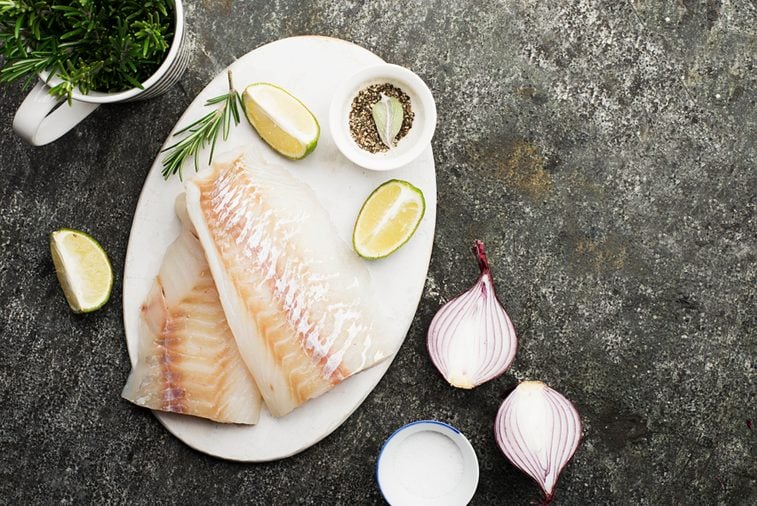
Best: Pacific cod
Cod is a flaky, mild-flavored white fish similar to haddock and pollock. It’s a good source of vitamin B-12, protein, phosphorus, and niacin. Try this meatier fish grilled or baked. “It can hold up well to different types of preparations without falling apart,” says Taub-Dix. “Cod is like a blank canvas that pairs well with any sauce.” Compared to men who consumed beef for lunch, those who had cod ate 11 percent less at dinner in a European Journal of Clinical Nutrition study. (Find delicious fish recipes for busy weeknights.)
Researchers attribute its slimming properties to cod’s heavy bulk of high-quality protein and its metabolism-regulating amino acids.
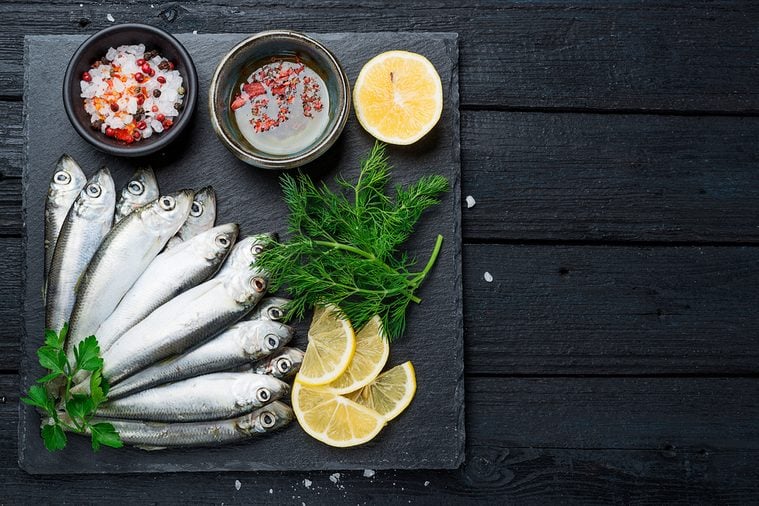
Best: Sardines
Fresh or in a tin, sardines are nutritional and inexpensive. You can find them salted, smoked, or canned in most markets. The canned kinds have whole or fillet sardines in oil, water, tomato sauce, or hot sauce. “If you don’t ditch the bones in sardines, your bones will thank you,” Taub-Dix says—you’ll get about 40 percent of your recommended daily value of calcium per serving. “Since most of us don’t get enough calcium, sardines are an excellent choice for many types of diets, especially those that can’t handle dairy,” she says.
The bite-sized fish is naturally high in vitamin D, too—many people fail to get enough D. Because they’re at the bottom of the food chain, they tend to contain less mercury. (The element builds up in large fish that feast on other big fish.)
Toss a salad with the fish or mash them on a slice of bread with mayo and tomato. “If you’re new to the taste, I recommend starting with canned sardines in olive oil instead of water,” says registered dietitian Jenna Appel, owner of Appel Nutrition Inc in Boca Raton, Florida. One note of caution: A can of sardines has about 282 milligrams of sodium, says Appel.
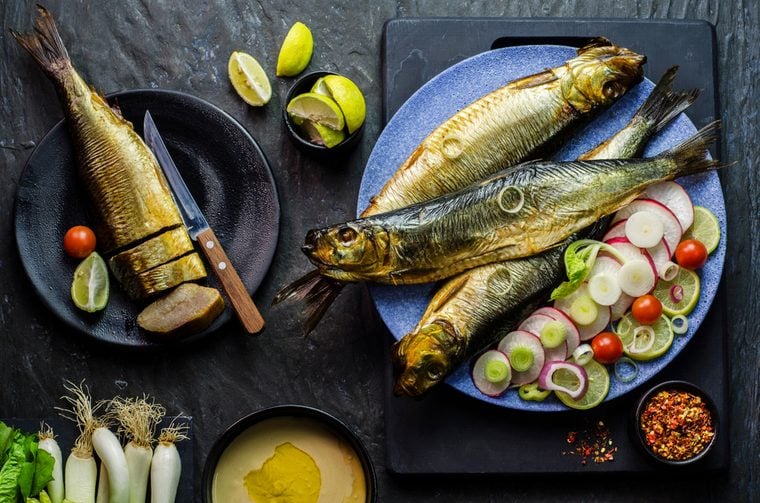
Best: Herring
The smaller fish at the bottom of the food chain tend to be a better choice: They reproduce in great numbers, grow fast, and contain fewer contaminants. Herring are one of the world’s best sources of vitamin D, a vitamin that protects bone, prevents breast and prostate cancers, and boosts heart health. (Herring has around 300 IUs per 3-oz. serving.)
A fatty fish, herring is especially good when it’s smoked—though that also means it will be loaded with sodium, so eat it in moderation. “Traditionally, pickled herring is served in a sour cream sauce,” says registered dietitian Alix Turoff. “A lighter take on this dish could use Greek yogurt instead of sour cream and stevia instead of sugar. It’s often mixed with vinegar and raw chopped onions.”
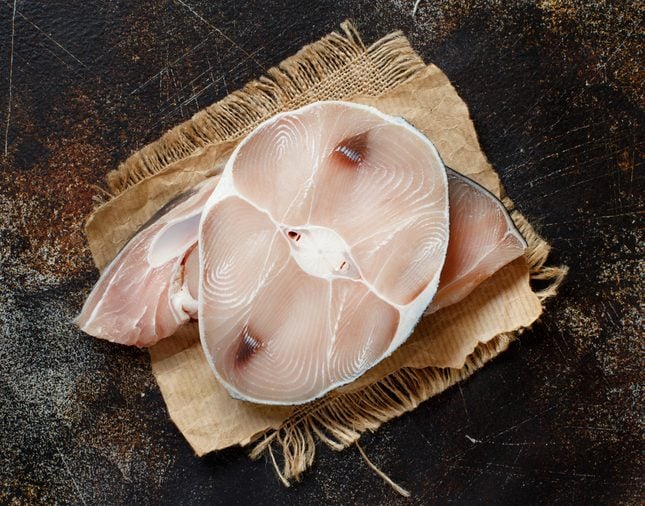
Worst: Shark
One reason to avoid shark is that the populations of these magnificent predators are in decline. Another important reason is that since they’re at the top of the food chain, sharks often eat fish contaminated with mercury. That raises the shark’s levels.
Mercury is a neurotoxin that can damage the nervous system and disrupt normal brain function, which makes the fish’s flesh particularly dangerous for young children and pregnant women. The higher a fish is on the food chain, the more mercury it likely has. (Here are the fish to avoid ordering in restaurants.)
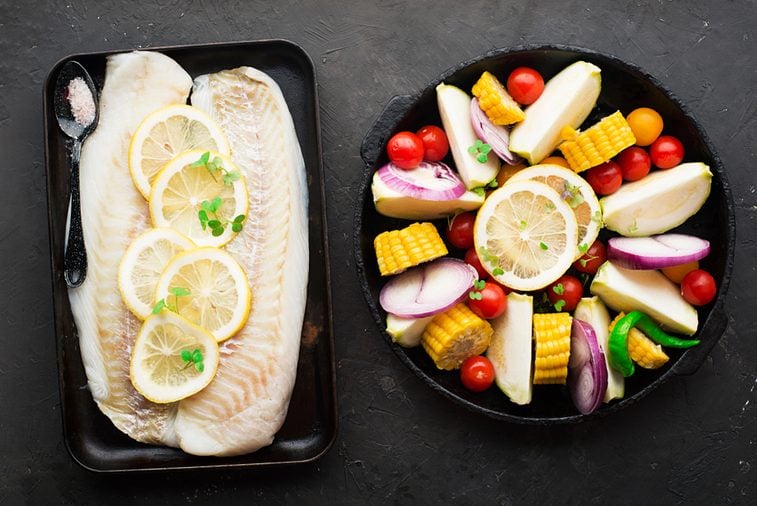
Worst: Marlin
Marlins are known for their pointed fins and long, sharp bills. The population is in decline because they’re often captured or killed by fishermen after other species. Because these impressive fish are at the top of the food chain, they can also be loaded with toxins.
“Marlin often contains unhealthy levels of mercury and other toxins that may be harmful to humans,” says Appel. Avoid all striped marlin and most blue marlin, with the one exception being blue marlin caught in Hawaii. Or just skip the marlin steaks: “Halibut or sturgeon are good alternatives,” says Georgette Schwartz, who’s Board Certified in Holistic Nutrition and practices at Integrative Acupuncture in Delray Beach, Florida.
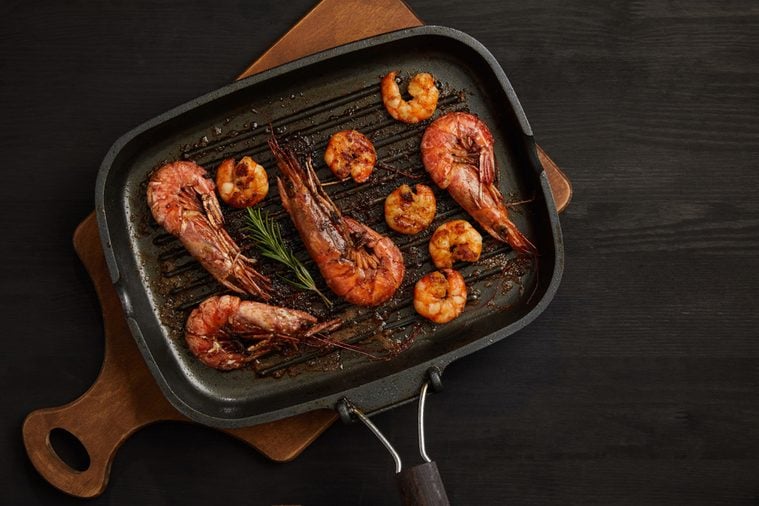
Worst: Imported shrimp
Imported shrimp boast an array of contaminants like E. coli, salmonella, listeria, antibiotics, chemical residues, and more. Instead, look for domestic shrimp that comes from the Gulf of Mexico or pink shrimp that come from Oregon. Look for farmed shrimp raised without chemicals or antibiotics. You want ones from large outdoor ponds that resemble their natural habitat, or from tanks that filter and recycle water and waste.
When buying raw shrimp, says Appel, they should be firm in texture. Shells should be translucent and grayish green, pinkish tan or light pink. Avoid ones with black spots or blackened edges. Cooked shrimp should be firm and white with a slight red or pink tint, she says. Both should have a mild salty smell, not a fishy or ammonia-like odor.
“One of the most versatile seafood proteins, shrimp can be showcased in almost any dish from around the world,” says Taub-Dix. Even better, shrimp bring in big health benefits whether they’re medium-sized or jumbo. You’ll get around 20 grams of protein from three ounces of shrimp, says Taub-Dix. A serving of shrimp also fulfills your daily selenium needs and provides vitamin B12, copper, choline, iodine and phosphorous, she says.
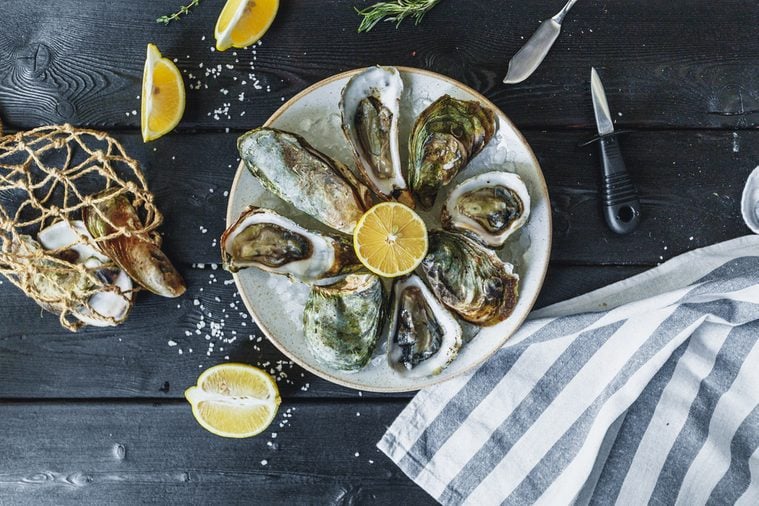
Best: Oysters
These little gems are loaded with zinc and may help you control weight: Research shows overweight people tend to have lower levels of zinc in comparison to people who are lean. They’re also high in iron and selenium—a serving can contain anywhere from 500 to 1,000 milligrams of omega-3s and over 40 percent of the recommended daily values of iron, according to the National Institutes of Health. Oysters are filter feeders, meaning they don’t need to be fed anything to live. They feed themselves by cleaning the waters around them.
As delicious as raw oysters may be, use caution: They can contain bacteria that cause serious illness. People with diabetes, cancer, liver disease, or weakened immune systems should skip raw oysters. “With their briny, ocean-forward flavor, oysters aren’t necessarily for everyone,” says Taub-Dix. “Oyster devotees enjoy eating this delicious shellfish fried, baked or raw, right out of the shell.”
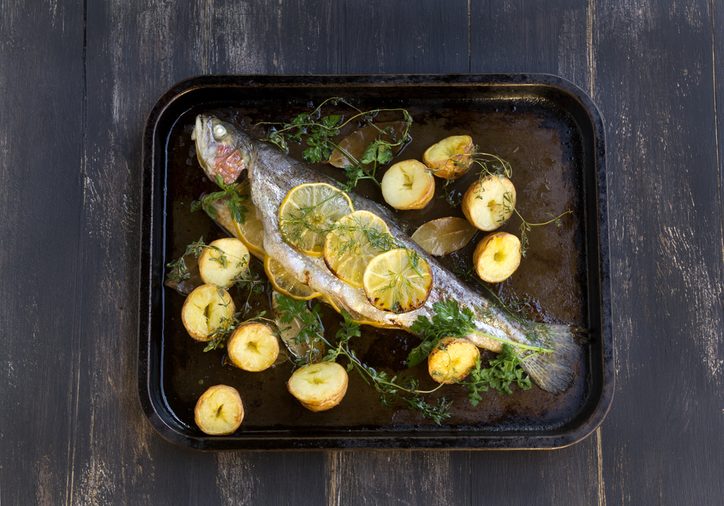
Best: Farmed rainbow trout
Nearly all trout at your local supermarket is farmed rainbow trout. Trout farming in the United States is strictly regulated, and the chemicals that producers can use are limited. Because the farms are contained, the fish are more protected from contaminants and keeps mercury levels low. This tasty and affordable fish is high in omega-3 fatty acids and B vitamins. It has a soft texture and flavor kids will likely enjoy. “Trout pairs well with lemon and herbs like dill, thyme, or parsley,” says Turoff. “It can be grilled or roasted for a simple meal.”
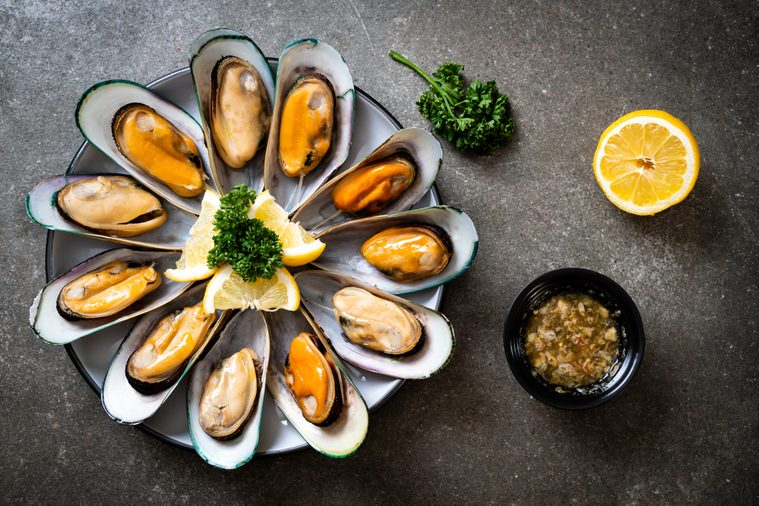
Best: Mussels
Rich in iron, selenium, and vitamin B12 and a good source of zinc, mussels are also low in calories and fat yet high in omega-3s. “The best part about mussels—aside from their nutritional content—is they’re easy to cook and you can flavor them in a million different ways,” says Appel. “If you’re cooking mussels at home, serve them with a side of fresh whole-grain bread for dipping, which will give you additional B vitamins, minerals such as iron, magnesium, and selenium, and dietary fiber.”
Schwartz agrees that they’re a healthy choice. “Steam them with butter (organic, grass-fed), garlic, white wine, and sea salt,” she says. “It’s easy and tastes fabulous.” When dining out, mussels are typically a good option, says Turoff. She explains that restaurants often prepare mussels with olive oil and/or butter, white wine, shallots, garlic, lemon, parsley, salt, and pepper, and sometimes cream. “There’s one caveat—they’re sometimes served as an entrée with French fries,” she says. “Order the appetizer portion instead. And substitute a vegetable or baked potato in place of the French fries.”
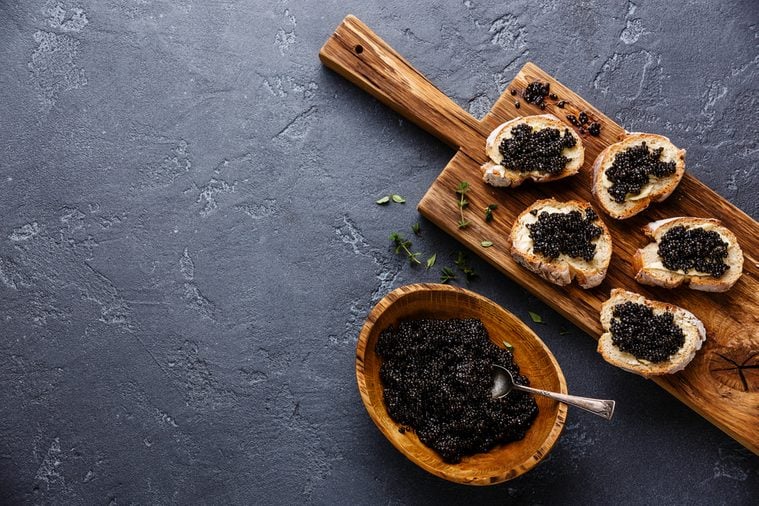
Worst: Wild caviar
Caviar comes from sturgeon which take a long time to mature, making the fishery fragile. If you really love caviar, go for fish eggs from American Lake Sturgeon or American Hackleback/Shovelnose Sturgeon from the Mississippi River system. “If you’re looking for something to serve as an appetizer in place of caviar, go for smoked salmon with goat cheese and cucumber slices,” says Turoff.
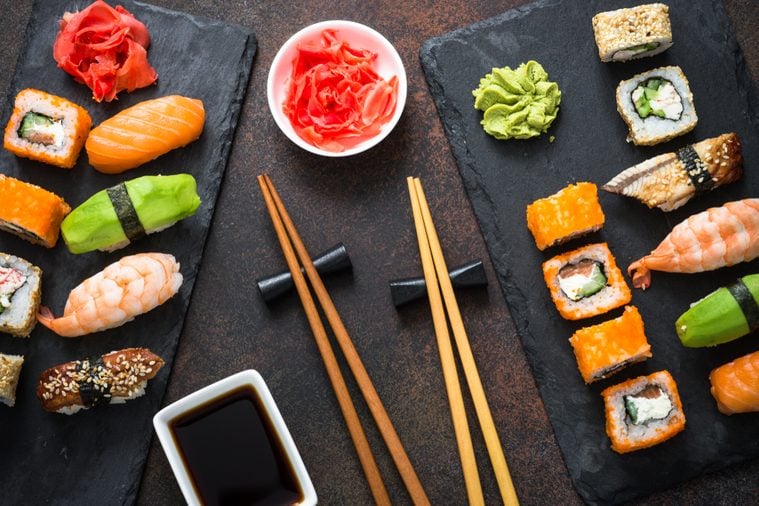
Worst: American eel
Most freshwater eel comes from farms that pollute; the population of wild eels is in decline. What’s more, the eels can be contaminated with mercury. Sorry sushi fans! Try American lobster instead, a similarly rich treat. If you like the taste of eel, you can also try Atlantic- or Pacific-caught squid. “Sable and haddock can be used as alternatives,” says Schwartz. Next, check out why you shouldn’t avoid buying frozen fish.
